Gandzasar is one of the monastic complexes of Artsakh, located near the village of Vank in Mardakert region, formerly in the Greater(Mets) Arank province of Artsakh.
GANDZASAR HISTORY
The monastery was a primacy and the ancestral mausoleum of Khachen princes. Due to the care that the princes of the Hasan-Jalalian dynasty provided, Gandzasar maintained its role as a spiritual center.
The monastery had a rich repository of manuscripts, a school, where high-value manuscripts were created and spiritual figures were educated. They contributed to the development of intellectual and cultural life in Khachen and surrounding areas.
Principality of Khachen
Information on Khachen, one of the Armenian government houses in Artsakh, has been preserved in the records of XII-XIII centuries. They confirm the fact that the country is Armenian and also has political relations with Armenia.
Hasan, the son of Sachar (Zaqar) Vakhtang, the owner of Haterk, Handaberd, Khachenaberd and Avkahatats fortresses, ruled the Khachen principality in 1142. In 1152, he married with one of the last representatives of the Lori branch of the Armenian Bagratuni dynasty, the daughter of King Kyurikyan.
One of his sons, Vakhtang, the ruler of Nerkin Khachen, whose another name was Tangik, married the daughter of Sargis the Great. He was one of the two prominent military and political figures of the Georgian queen Tamara.
Mkhitar Gosh about Hasan Jalal
Mkhitar Gosh, the author of the “Armenia’s Code of Laws”, had close ties with the ruler Hassan Jalal and his son Vakhtang. He called them “the leaders of the other princes” and equated them with Cilicia’s King Ruben.
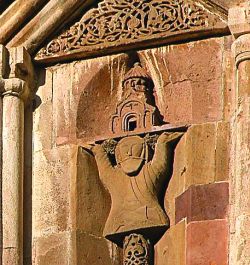 By clarifying their role in the political life of the country, the Armenian lawmaker states that “in our kingdom (i.e Armenia) … during the days of anarchy … there were only some princes in Khachen at first”
By clarifying their role in the political life of the country, the Armenian lawmaker states that “in our kingdom (i.e Armenia) … during the days of anarchy … there were only some princes in Khachen at first”
Vakhtang, son of Hasan Zakaryan (husband of Khorishah), had three sons and three daughters. He named his eldest son Hasan, in the honor of the grandfather, Zakare, and Ivane, in honor of the Armenian princes, Tamara’s military commanders.
A number of protocols provide information about Artsakh-Khachen Prince Hasan Jalal (1214-1261) and his descendants. In a record of 1229, Hasan Jalal appeared as the ruler of Artsakh-Khachen. “With God’s favor, me; Hasan – the son of Vakhtang and Khorishah, built this holy church …”
In the inscription on the wall of Gandzasar monastery, he reports about himself and his domains. “I, the humble servant of God, Jalal Dovla Hassan, the son of Vakhtang, the grandson of great Hassan, the oldest prince, and king of the great Artsakh and the adjacent regions [Khachen].”
TIES WITH THE MONGOLS
The Prince of Artsakh-Khachen established close ties with Mongolian rulers. Historian Kirakos Gandzaketsi (XIII century) writes:
“The wise Prince (Jalal), when learned about the assaults of the unbelievers, gathered all the inhabitants of his land in the fortress, which the Persian called Khokhanaberd. And when (Tartars) came, they found that it impossible to capture the fortress and offered to establish a peace deal. And he wisely came to an agreement with them. Then he went to visit them with gifts. (Tatars), giving him honor, returned his domains, and even added some territories, then ordered him to go out to war with them every year, and live quietly in their land. (Jalal) cleverly ruled in his country.
Everything necessary for the messengers coming to him, be it food or something else, he would collect and keep close to him, and even add more things and give them when they came to him. And (the Tartars) did not suppress the country (population), but just went to him. In other regions, they did not do like that, so they (Tatars) pressured people everywhere, however they could.”
Hasan & Sartakh
Sartakh, who adopted Christianity, was the son of Batu Khan of the Golden Horde. About the close relationship between the Armenian prince and his son Sartakh the historian reports:
He took (Jalal) to his father, honored him and returned his tribal estates, Charaberd, Akanaberd and Karkar, which the Turks and Georgians had earlier taken away… “
Later, in 1255, after the death of Batu Khan, Hasan together with Sartakh went to the Mangu Great Khan of Mongolia. He himself is reporting that:
“I, Jalal Dovla Hassan, went to the king – to the east: to the north country, with my family and household for the church’s peace. With my wife, Mamkan and my son Atabek, given to us by the God, I traveled to the north-east, and I went to the end of the world, to the khan named Mangu.”
Historian Kirakos Gandzaketsi writes that he “went to the Mongol ruler to express his complaints” against tax collectors and governor Argun.
Turkish invasions
For the first time, the Turkish tribes began to appear occasionally in Asia as a result of the invasions of nomadic tribes of Asia: Seljuks (1048, 1049, 1054, 1065), Tatar-Mongolian Hordes (1236-1243), Tokhtamish of Golden Horde (1385, ) and Lenk Timur (1386, 1394 and 1400).
In 1386-1405, after the invasions of Lenk Timur troops to the Transcaucasus, Northern Iran, and Armenia, in the first half of the XV century went under the rule of the Turkic Kara Koyunlu tribe. in the second half of the XV century – under the rule of the Akkoyunlu tribes.
Nevertheless, the power of Hassan Jalal continued to exist; his representatives retained the title of meliks among the minorities of Nagorno-Karabakh in the XVI-XVIII centuries. The low parts of Karabakh, in particular, the Mughan steppe, was under the control of the Turks. During the reign of the Safavid dynasty in Persia, Karabakh was one of its provinces. The plateaus and highlands of Karabakh were under the authority of Muslim khans, while the mountainous parts remained in the hands of the Armenian princes.
The Armenian system of meliks finally formed in Nagorno-Karabakh during the reign of Shah-Abbas I in Persia (1587-1629). In those years, the Persian authorities encouraged the Armenian meliks to take action against the Ottoman Empire. At the same time, the rulers of Persia were trying to weaken the Armenian meliks by removing them from the other Armenian territories by settling the Kurdish tribes between Artsakh and Syunik.
Melik is an Arabic word that means king and ruler. In ancient Persia, autocratic people were called meliks, then hereditary rulers. Meliks were always hereditary rulers in the Transcaucasus, and the importance of the place showed the importance of the melik. This title has served as the proof of the surname age and origin.
St. John the Baptist Church
The first information about Gandzasar reached us thanks to the Catholicos Anania Mokatsi (10th century). It was a modest church and existed still in the 4th century. In the place of that church, Prince Hasan Jalal Dovla built the St. John the Baptist Church of Gandzasar in 1216-1238. It was named in the honor of the greatest earthly saint, John the Baptist. A potter brought the head of the saint from Jerusalem to Artsakh. Then, transferred to the prince of Artsakh.
Mkhitar Gosh and Kirakos Gandzaketsi have described this grand event. Gandzaketsi writes that Catholicos Ter-Nerses of Aghvank, together with numerous bishops, a great philosopher, and scholar Vanakan(Monk) along with many teachers, high-ranking clergymen from different provinces of Armenia were present at the ceremony… In short, 700 priests with their prayers and psalms consecrated the church.
“And when the event ended (consecration), he (Jalal) made a huge banquet. He served everyone with his own hands and gave each one a gift according to their honor. And he gave abundant gifts and ensured that everyone departs safely, “- tells Kirakos Gandzaketsi who personally attended the celebration in his “Armenian history” book, “This took place in the six hundred and eighty-nine year of Armenia (1240), on the Vardavar day.”
The wife of Hasan Jalal, Mamkan later built the church courtyard. Thanks to the resourcefulness of their son Atabek, they could bring the relics of Jalal. He was tortured to death for a week in a foreign country. They summed the relics up in the courtyard.
John the Baptist Church is one of the best preserved medieval Armenian monuments
The Cathedral of St. John the Baptist of the Gandzasar Monastery closely resembles the two other churches of Armenia: Cathedral of the Holy Mother of God of the Harich Monastery in Shirak province, and Cathedral of St. John the Baptist of the Hovhannavank Monastery in the province of Aragatzotn.
On the northern wall of St. John the Baptist Church in Gandzasar, Hovasap Miaynaketsi recorded Hasan Jalal Great’s Covenant in 1240. According to the 27-line testament of Hasan Jalal, when the construction of Gandzasar began, and the masters reached the eastern window, his mother, Khorishah, went to Jerusalem, just like the wife of the king Abgar, Heghine. She devoted herself to an ascetic life till the end of her life, at the Holy Resurrection Cathedral.
According to his testament (which you will read below), he freed the churches from taxes. By the will of the unity and patriarchy of Catholicos Nerses of Aghvank, he appoints the Holy Liturgies.
The Gandzasar Monastery in 1400 became the seat of the Catholicosate of Aghvan. In this monastery, Israel Ori and Hovsep Emin had meetings with catholicoses. They were prominent figures of the Armenian liberation movement of the 16-17 centuries.
For centuries the temple and the rest of the monastery have undergone minor changes and rehabilitation activities. The first reconstruction of the monastery was carried out in 1551 during the reign of Sargis Catholicos.
Reconstruction works were also undertaken in 1781, by the commander Abov of Gulistan melikdom. Gandzasar was restored again in 1907 on the initiative of Khachen’s successor, Abraham Hassan-Jalalian.
Today Gandzasar Monastery presents to the whole world with its full splendor and charm.
Gandzasar was a primacy
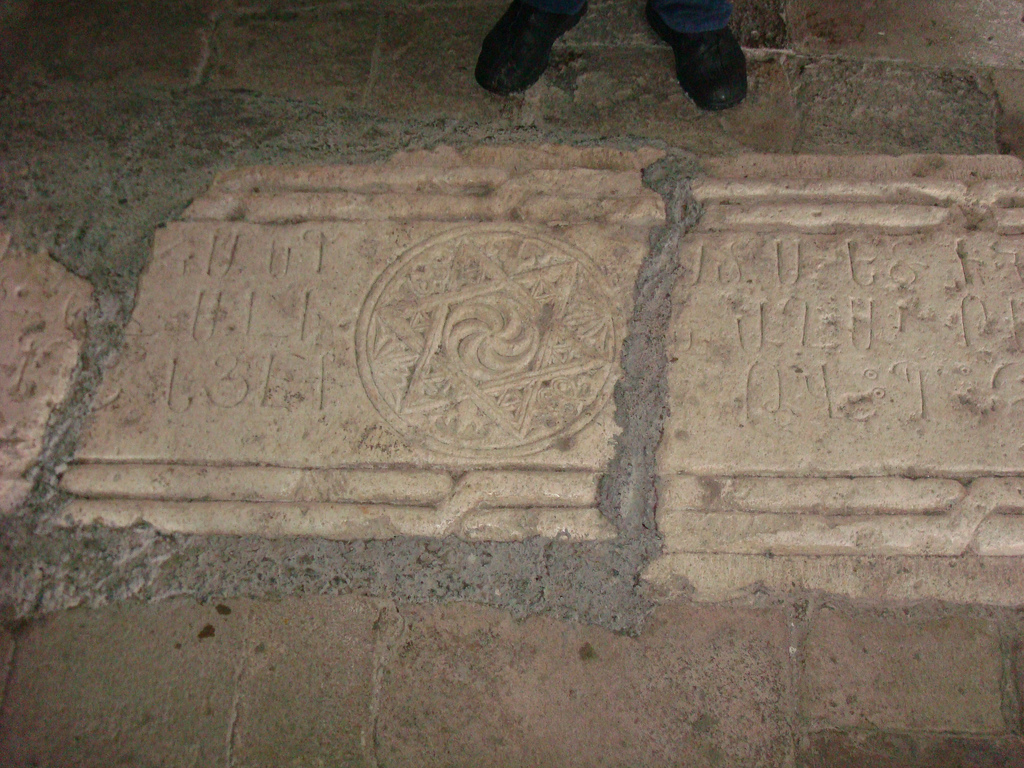 It was the tribal mausoleum of Khachen princes. From 1400 to 1816, it was the residence of the Catholicosate of Aghvan. Due to the care provided by the princes of the Hasan-Jalalian family, Gandzasar maintained its role as a spiritual center for a long time. The monastery had a rich manuscript, a school. There were writing and miniature art centers.
It was the tribal mausoleum of Khachen princes. From 1400 to 1816, it was the residence of the Catholicosate of Aghvan. Due to the care provided by the princes of the Hasan-Jalalian family, Gandzasar maintained its role as a spiritual center for a long time. The monastery had a rich manuscript, a school. There were writing and miniature art centers.
For centuries, Gandzasar has also done a national, cultural, and political mission with honor. Over time, Gandzasar’s role in the Armenian reality has been sanctified, gaining a pan-Armenian value. Perhaps this was the reason why in the 14 century, during the difficult times of the Armenian Cilicia. Hovhan Vorotnetsi worried about the fate of the Armenian Apostolic Church, suggested that the seat of the Catholicosate of All Armenians should move to Gandzasar. Later, Grigor Tatevatsi shared the same idea.
To Sum It All Up:
The foundation of the Cathedral was laid in 1216 by Hasan Jalal. He called himself the “Supreme Potentate” of Artsakh’s largest and strongest Principality of Khachen. As the historian, Kirakos Gandzaketsi described, the Cathedral was completed in 1238. It was sanctified on the day of the Feast of Vardavar (Transfiguration of Christ), in the year 1240.
The consecration of the church took place in the presence of over 700 guests. The sanctification of the Cathedral was postponed by two years because of the Mongol invasions of Armenia.
This information can be inferred from the inscriptions in Armenian found on the walls of the Cathedral. This includes a large dedication, by the order of Hasan Jalal himself on the interior of the Cathedral’s western wall.
See the main part of the inscription below:
“In the name of the Holy Trinity, Father, Son and the Holy Spirit, I, Jalal Dola Hasan, the servant of God, the son of Vahtang, the grandson of Hasan the Great, the native potentate of the high and broad province of Artsakh, King of Hohanaberd, with large districts, have ordered to inscribe these lines. My father, before his departure from 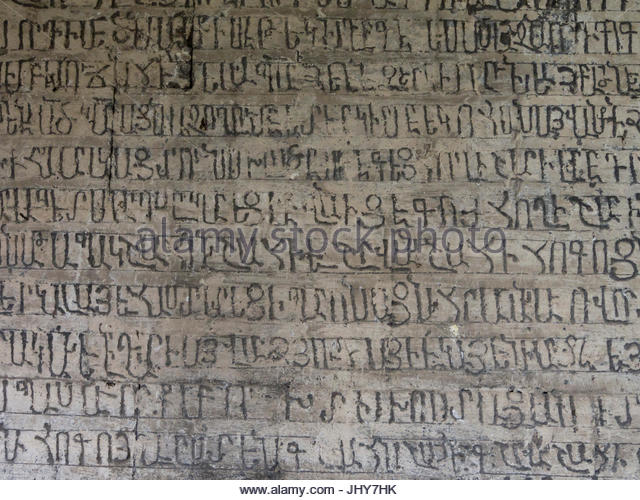 the earth, ordered me and my mother Khorishah, the daughter of Sargis the Great, Prince of Princes, to erect a church and [organize] the cemetery of our forefathers in Gandzasar, the building of which began in 765 of the Armenian Calendar (1216) with the help of the Grantor of Benefits (God).
the earth, ordered me and my mother Khorishah, the daughter of Sargis the Great, Prince of Princes, to erect a church and [organize] the cemetery of our forefathers in Gandzasar, the building of which began in 765 of the Armenian Calendar (1216) with the help of the Grantor of Benefits (God).
And when we erected the wall above the windows, my mother abandoned secular life and departed for a pilgrimage to Jerusalem for the third time. There, putting on the cilice and spending many years in seclusion near the Lord’s Temple, passed away on the day of the Holy Resurrection of Christ. And, there was laid to rest. As to us, we, being aware of the danger of being idle, hurried to complete the construction work with the holy blessing of Merciful God, in 787 (1238)…” (from Bishop Makar Barkhudarian. Artsakh. Baku, 1885)
Overall, the monastery’s structures contain up to 200 texts inscribed in Old Armenian belonging to different times.
source: gandzasar.com
The Gandzasar Code
Gandzasar is not only significant as the seat of Armenian kings and bishops. It is also at the center of a great historical riddle which connects the present world with royal families of medieval Armenia, patriarchs from the Old Testament, as well as epic forefathers of the Armenian people.
When Armenians want to give special importance to Nagorno Karabakh, they say: “after all, the crown of the ancient Armenian Kingdom is in Nagorno Karabakh”. Moreover, the image of the Armenian Crown features on the state seal of the Karabakh. The word crown in this context, by the way, is used symbolically.
These connections run through the bloodline of the Hasan-Jalalians family, the direct descendants of Hasan Jalal Vahtangian, the prince who built the St. John the Baptist of the Gandzasar Monastery. He also ruled Artsakh as one large Armenian kingdom. Not surprising, Nagorno Karabakh— the historical Artsakh—is a very important land to the Armenian people.
Da Vinci Code
In recent times, some bestselling authors also tried to explore similar connections. The Da Vinci Code by the American writer Dan Brown masterfully concocts an intelligent thriller that marries the gusto of a mysterious international murder with a collection of fascinating esoterica culled from 2,000 years of the history of the West.
In the book, Harvard symbologist Robert Langdon discovers that the mysterious riddle he was solving leads to a trail of clues hidden in Da Vinci works. Brown portrayed the Italian genius painter and also inventor as one of the principles of the soi-disant Priory of Zion. It is a centuries-old secret society set up to preserve the Holy Grail.
The biggest mystery perhaps is that the Holy Grail is not a physical goblet from the Christ’s Last Supper. Rather, it is a metaphor to describe a woman (Mary Magdalene) who carried the child of Jesus Christ in her womb. In the text, Professor Langdon joins forces with a gifted French cryptologist, Sophie Neveu. The latter turns out to be the very direct descendant of Jesus Christ and Mary.
The Da Vinci Code is a fantasy, meanwhile, the Hasan-Jalalians are no fictional characters. They were and still are real living individuals, who claim a direct blood lineage to the Bagratid kings of Armenia and Hayk Nahapet, the epic forefather of the Armenians. And they also claim a connection to no one other than the Old Testament’s Japheth and his father Noah.
It seems that, consequently, the Gandzasar Monastery might turn into an international hotspot that might soon vie The Da Vinci Code’s Chapel in Scotland.
Holy See of Gandzasar
The Gandzasar Monastery is currently in the Mardakert District of the Nagorno Karabakh Republic. About two hours drive from Stepanakert and you will get there. It stands atop of the Mt Gandzasar (hence the name). It is a large green hill that rises above the historical town of Vank.
The name “Gandzasar” from Armenian means “Treasure Mountain.” “Gandz” means a “treasure” and “sar” means a “mountain”. They point to the ancient copper and silver mines found in the vicinity. But the real treasure, however, might also be the architectural and historical significance of the monastery.
Gandzasar is a walled abbey. Consists of both ecclesiastical and non-ecclesiastical buildings. The centerpiece is the Cathedral of St. Hovhannes Mkrtich (St. John the Baptist; Armenian, about which you have read above). It is a large church with a cupola in the inscribed cross plan.
Hasan Jalal’s successors assumed the surname Hasan-Jalalian in the memory of their celebrated grandparent. The clerical line, in addition, controlled top positions of the Holy See of Gandzasar hereditarily. Meanwhile, the original, princely one, continued administering the Province of Khachen as princes and meliks.
Mongol hordes and other tribes sacked the monastery several times.(at the beginning of the thirteenth century). In the late eighteenth century, the gangs of the Turkic chieftain Ibrahim-Khalil Javanshir looted Gandzasar. He was the tribal lord from the family of the self-proclaimed “Khans of Karabakh”.
By invading Artsakh’s Castle of Shushi for over 50 years, Ibrahim had been terrorizing the clergy of Gandzasar. In 1786, this policy culminated in capturing, torturing and killing Gandzasar’s Catholicos Hovhannes Gandzasaretsi and his brothers. Most recently they attacked Gandzasarin in 1992, in the course of Azerbaijan’s anti-Armenian aggression and Nagorno Karabakh’s heroic self-defense. But despite the challenges before them, Armenians have always organized extraordinary measures in order to defend Gandzasar.
How to Get To Gandzasar and Where To Stay
There are some good books that describe tourist destinations in Karabakh, including the Gandzasar Monastery. They provide a lot of information on how to get to Karabakh from Armenia, where to stay, what to see. You can also find out how to travel to specific places of interest. Moreover, you can find where to eat, how to obtain visas from the NKR Ministry of Foreign Affairs. In addition, you may want to know how to avoid areas that are close to the line of contact between Nagorno Karabakh’s and Azerbaijan’s armed forces.
All books below are available from major online bookshops, for example Amazon.com:
- Armenia and Karabagh: The Stone Garden Guide, Stone Garden Productions, Northridge, California, third edition, 2006
- Nicholas Holding. Armenia, with Nagorno Karabagh: The Bradt Travel Guide, Bradt Travel Guide, 2006
- Georgia Armenia and Azerbaijan (Multi Country Guide), Lonely Planet, 2008
- John Brady Kiesling and Raffi Kojian. Rediscovering Armenia: An Archaeological-Touristic Gazetteer and Map Set for Armenia’s historical monuments, Tigran Mets Publishing, Yerevan, 2001
There are also a number of good maps to get around once in Nagorno Karabakh in Armenia. One such map of the Southern Caucasus has a large section on Nagorno Karabakh. And there is the Gandzasar Monastery sign on it.
- Armenia and Azerbaijan Map by ITMB (Travel Reference Map). International Travel Maps & Books, 2005


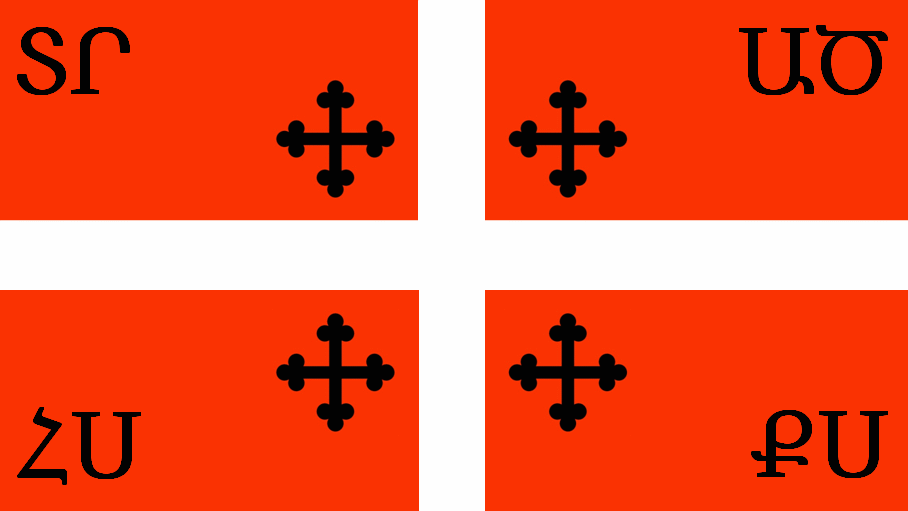
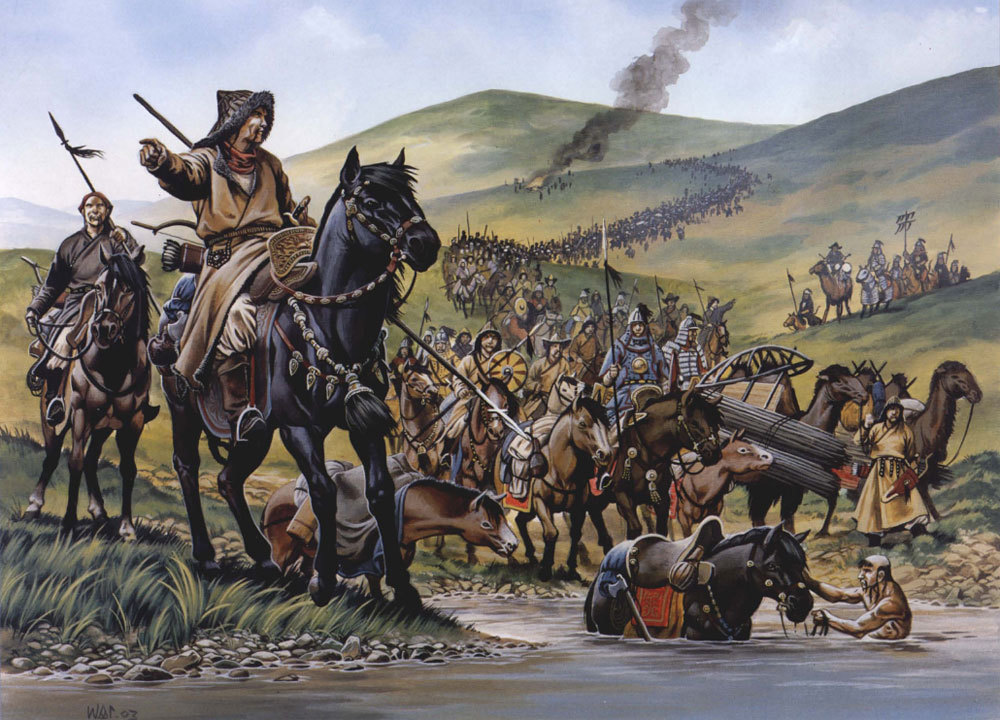
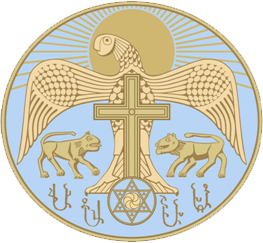
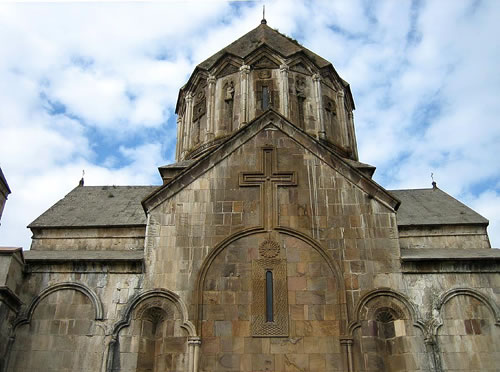
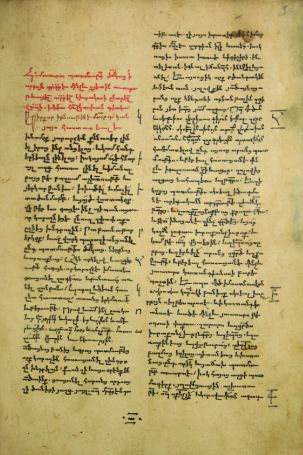






















Leave a Comment